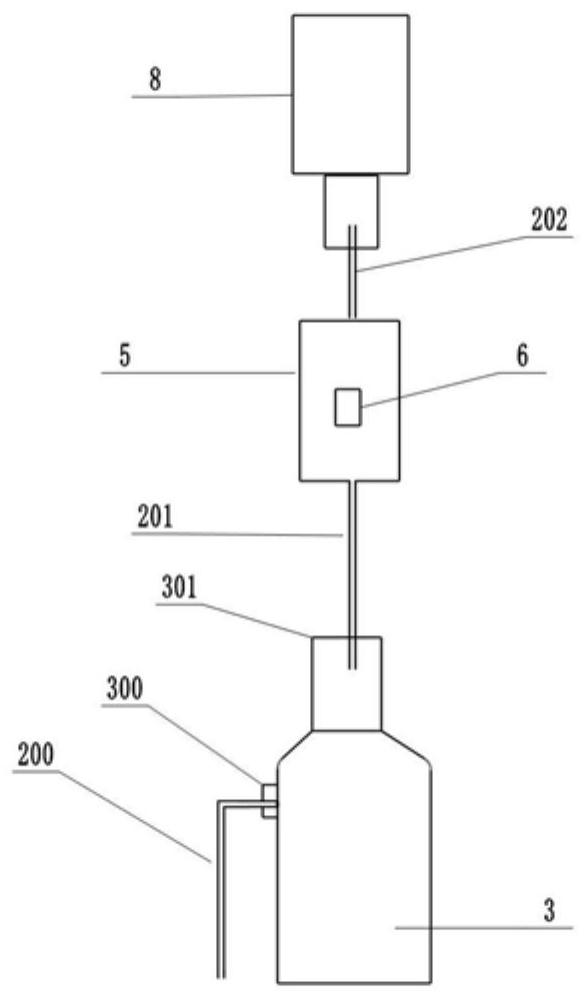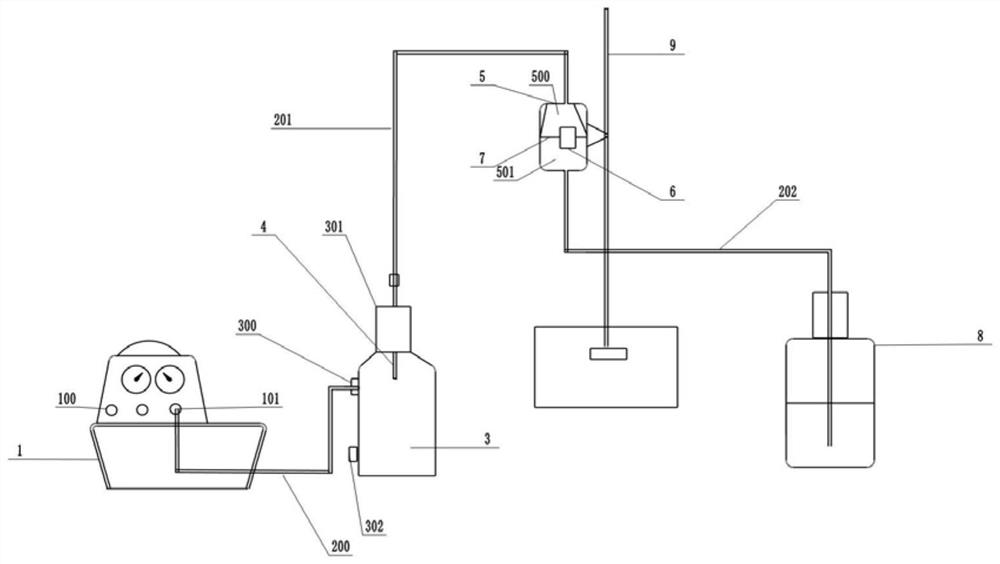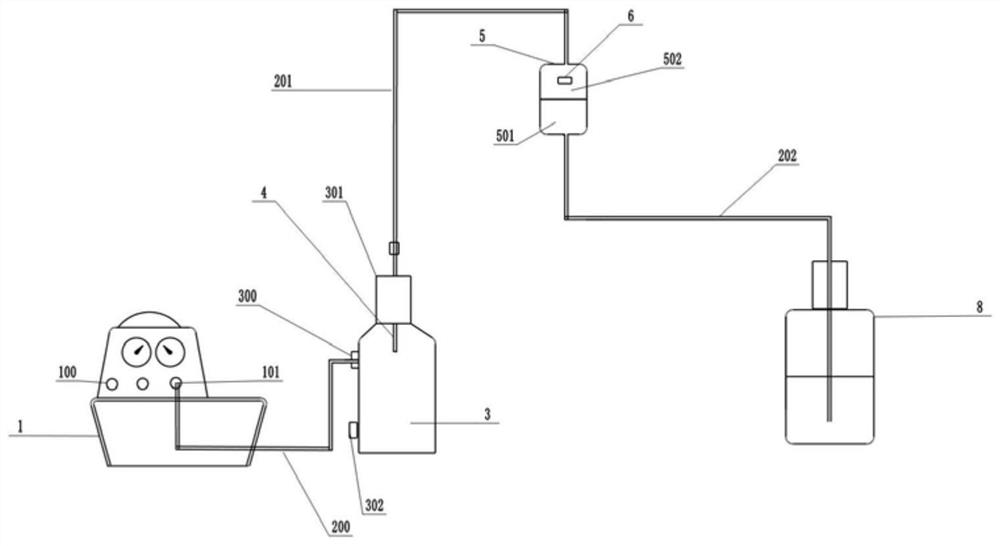A decellularized device for tissue engineering scaffold
A decellularization and cell technology, applied in the field of biological material decellularization devices, can solve the problems of unsatisfactory mechanical strength or biological activity, microbial contamination of biological materials, complicated treatment process, etc., so as to reduce operation steps and water consumption, The effect of reducing damage and improving the effect of decellularization
- Summary
- Abstract
- Description
- Claims
- Application Information
AI Technical Summary
Problems solved by technology
Method used
Image
Examples
Embodiment 1
[0128] Such as figure 1 As shown, the decellularization device includes a first pipeline 200, a first container 3, a second pipeline 201, a second container 5, a third pipeline 202, and a third container 8 connected to the third pipeline 202, which are sequentially sealed and communicated; One end of the first pipeline 200 is connected to the first opening 300 of the first container 3; one end of the second pipeline 201 is connected to the second opening 301 of the first container 3; the other end of the second pipeline 201 is connected to the third pipeline One end of 202 is respectively connected to the two ends of the second container 5; the second container 5 is used to place the biological material 6, and the biological material 6 cannot enter the second pipeline 201 and the third pipeline 202, and the solution includes cells It can enter the second pipeline 201 and the third pipeline 202 . The position of the third container 8 is higher than that of the second container...
Embodiment 2
[0130] Another embodiment of the present invention, such as figure 2 As shown, the decellularization device also includes a negative pressure suction device 1, the negative pressure suction device 1 can be a circulating water vacuum pump with a power switch 100 and a vacuum port 101 on it. There are three openings on the first container 3 , which are the first opening 300 and the second opening 301 , wherein the first opening 300 is connected to the vacuum interface 101 on the negative pressure suction device 1 through the first pipeline 200 . The decellularization device may also include a glass tube 4 , one end of the glass tube 4 is inserted into the first container 3 through the second opening 301 on the first container 3 ; the other end is connected to one end of the second pipeline 201 . In this embodiment, the second opening 301 on the first container 3 can be plugged with a rubber stopper, and the glass tube 4 can be inserted into the third container 3 through the rub...
Embodiment 3
[0139] In one of the embodiments of the present invention, in embodiment 1 figure 2 On the basis of the decellularization device, the decellularization liquid (used decellularization liquid) in the first container 3 can be recycled. Such as Figure 4 As shown, there is used decellularization liquid (waste liquid) in the first container 3, and one end of the glass tube 4 is inserted below the liquid level of the waste liquid (wherein the first container 3 is ventilated, for example, the rubber stopper can be removed).
[0140] The third container 8 is replaced by a fourth container 11 . The fourth container 11 has an opening 110 , an opening 111 and an opening 112 , and the opening 110 is connected to the vacuum interface 101 on the negative pressure suction device 1 through the first pipeline 200 .
[0141] When the decellularization device starts to work, the first opening 300 and the third opening 302 on the first container 3 are closed. When the negative pressure suctio...
PUM
 Login to View More
Login to View More Abstract
Description
Claims
Application Information
 Login to View More
Login to View More - R&D
- Intellectual Property
- Life Sciences
- Materials
- Tech Scout
- Unparalleled Data Quality
- Higher Quality Content
- 60% Fewer Hallucinations
Browse by: Latest US Patents, China's latest patents, Technical Efficacy Thesaurus, Application Domain, Technology Topic, Popular Technical Reports.
© 2025 PatSnap. All rights reserved.Legal|Privacy policy|Modern Slavery Act Transparency Statement|Sitemap|About US| Contact US: help@patsnap.com



